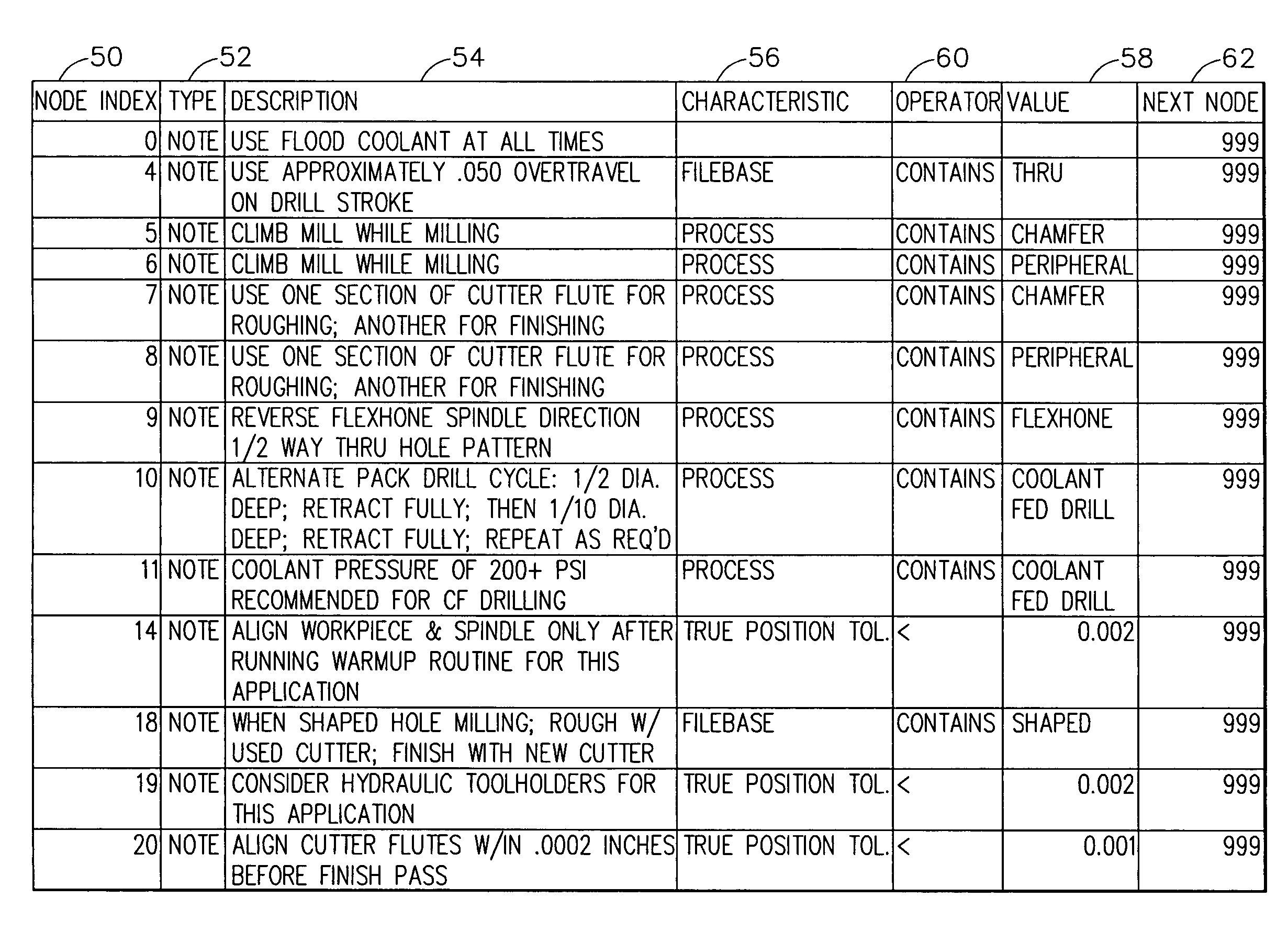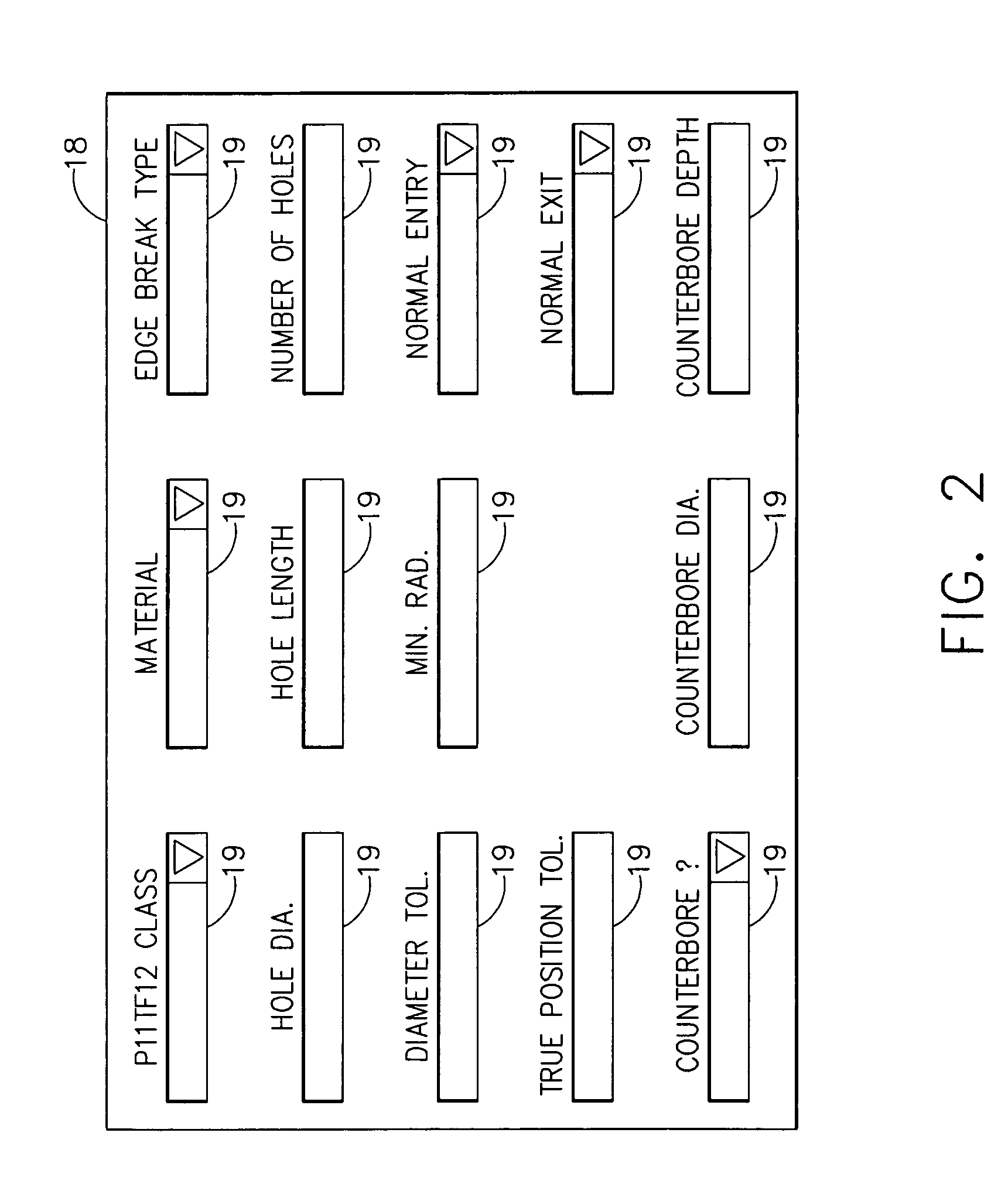Process planning for distributed manufacturing and repair
a technology for manufacturing and repair and process planning, applied in the field of process planning, can solve the problems of inefficiency, inefficiency, and inefficiency of the sequence design of the feature process at one site, and achieve the effect of realizing efficiency
- Summary
- Abstract
- Description
- Claims
- Application Information
AI Technical Summary
Benefits of technology
Problems solved by technology
Method used
Image
Examples
Embodiment Construction
[0017]FIG. 1 illustrates a distributed processing system 10 that is capable of uniform distribution of recommended process sequences to a number of manufacturing sites, where two or more sites are either manufacturing the same product, piece of a product, or a feature common to two or more products, or to a number of repair sites where common repairs are made. The system 10 includes: (1) one or more user computers 12A–12N that are each capable of transmitting requests for recommended process sequences over a digital communication network and receiving the recommended process sequences subsequently conveyed over the network in reply to the request; (2) a digital communication network 14 for conveying the requests and the recommended process sequences; and (3) a planner 16 that, in response to a request, provides a recommended process sequence for conveyance over the network 14 to the requesting user computer.
[0018]The network 14 can include any kind of digital communication network o...
PUM
 Login to View More
Login to View More Abstract
Description
Claims
Application Information
 Login to View More
Login to View More - R&D
- Intellectual Property
- Life Sciences
- Materials
- Tech Scout
- Unparalleled Data Quality
- Higher Quality Content
- 60% Fewer Hallucinations
Browse by: Latest US Patents, China's latest patents, Technical Efficacy Thesaurus, Application Domain, Technology Topic, Popular Technical Reports.
© 2025 PatSnap. All rights reserved.Legal|Privacy policy|Modern Slavery Act Transparency Statement|Sitemap|About US| Contact US: help@patsnap.com



